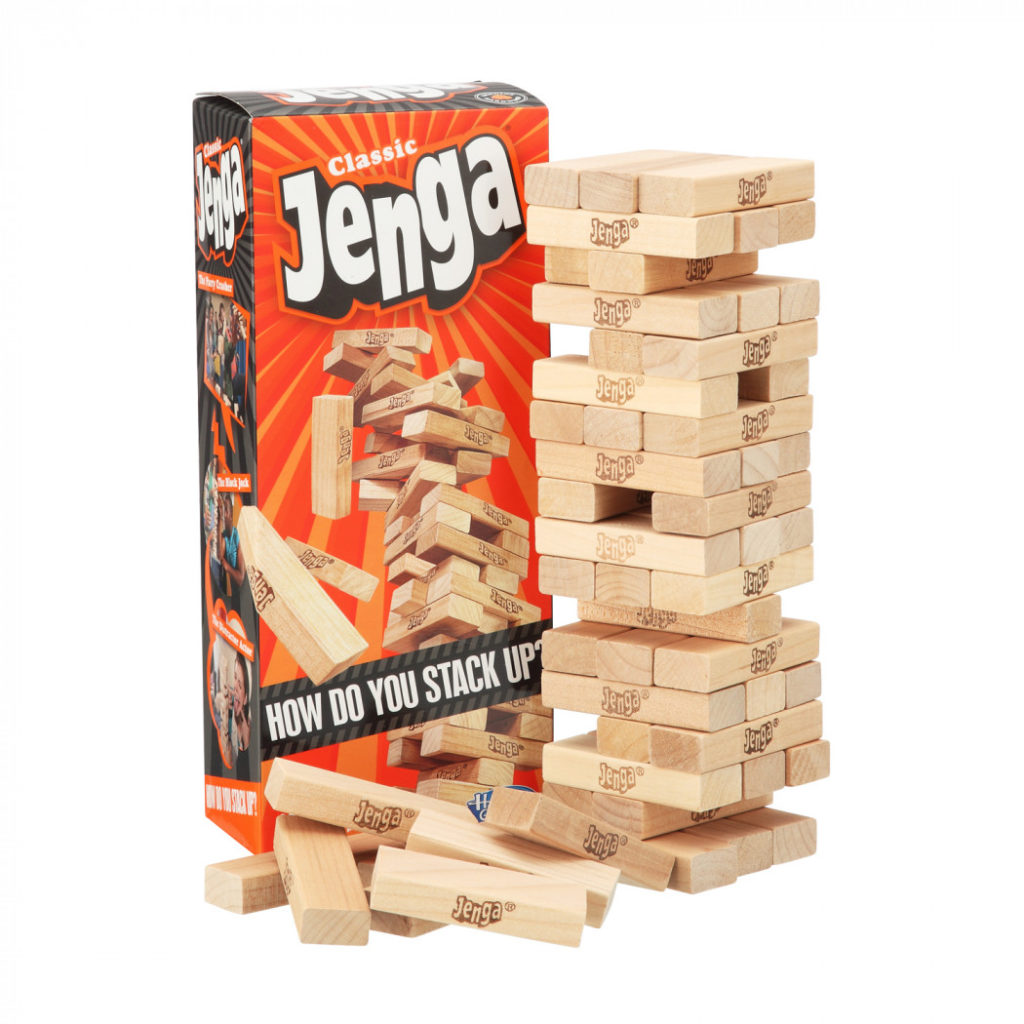

According to Hasbro, it’s believed to be the tallest on record. That year, he was able to complete a 40-layer structure consisting of three blocks per layer. In 1985, Jenga sales representative Robert Grebler pursued competitive play, stacking increasingly large towers of blocks. There’s a world record for the tallest Jenga structure. Each brick is a different size and weight so no two games are alike. While they may look similar, Jenga blocks have subtle differences in dimensions to make their construction less stable. When Trivial Pursuit proved there was still a market for analog games-it sold 15 million copies in 1984 alone- Jenga was able to wedge a foot (or a block) in the door.

“I was extremely lucky that I launched Jenga just after Trivial Pursuit had hit the big time and the toy trade was actively looking for the next big board game,” she said.Īt the time, the toy industry was heavily into electronic diversions, including the recently-released Nintendo Entertainment System. But according to Scott, Jenga might not have taken off if Trivial Pursuit, which launched in the U.S. The games couldn’t be more different: Jenga requires fine motor skills, while Trivial Pursuit requires a memory warehouse of knowledge. Jenga was released in North America in 1986 and became an immediate hit, though Scott’s deal left a lot to be desired: Scott has said she receives just 20 percent of the royalties on the game, an amount she said comes to about five cents for every $10 Jenga earns. When Hasbro's then-chief executive Alan Hassenfeld saw the game, his reaction was: "We just have to have it." He quickly bought the distribution rights for the United States. Their trust was rewarded when the game appeared at the 1986 Toronto Toy Fair Scott received orders for 400,000 copies. Her then-partner agreed to be a guarantor on a loan, and Scott’s mother agreed to put her house up as collateral for a second loan. At one point, she told the Oxford Times in 2009, she contemplated selling both her house and her shares of Intel to help continue funding the game. Because Scott was paying for production herself, the game’s lack of success had personal consequences. The early sales of Jenga were not encouraging. Jenga nearly bankrupted inventor Leslie Scott. Jenga-which is Swahili for “build”-was launched in the UK in 1983 and in Canada in 1984. When they kept insisting on playing the “game with bricks," Scott decided to bring the game to market. In her spare time, she held dinner parties for friends. In Oxford, England, Scott worked at Intel as an internal game designer to help employees learn new skills. “It was only when I moved to Oxford that I realized this wasn’t something everyone did,” Scott told the Somerset County Gazette in 2010. It wasn’t until later on that Scott realized the game had been conceived within her household. The family loved the game so much that they eventually ordered professionally-crafted bricks from a carpenter. In the 1970s, Scott’s family often played with her brother’s amassed pile of building blocks, using them to build a swaying tower that would crumble if they weren’t careful. Leslie Scott was born in Dar es Salaam in Tanzania and spent her youth moving to cities across Africa.


 0 kommentar(er)
0 kommentar(er)
